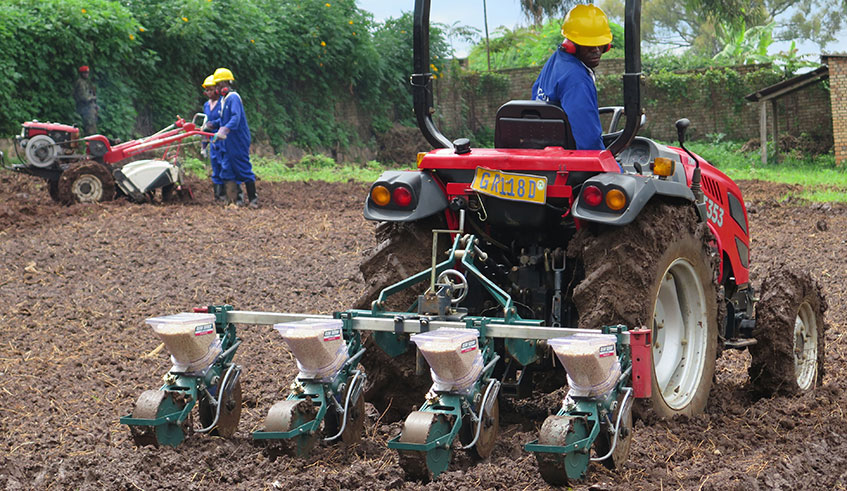

Rwanda will soon have a centre of excellence in agricultural mechanisation to boost productivity.
Patrick Karangwa, the Director-General of Rwanda Agricultural Board (RAB), told The New Times just after a high-level conference on transforming smallholder farming in Africa.
Currently, agricultural mechanisation stands at 25 per cent in Rwanda, but with the mechanisation centre, it is expected to reach 50 per cent by 2024, Karangwa.
The government has secured a $120 million loan from EXIMBANK to help set up the centre and other projects such as irrigation, he added.
The centre will be able to assemble mechanisation equipment locally, the capacity to maintain the equipment and repair them as well as increasing the mass training or mechanisation operations.
"It will work in partnership with other institutions like institutions of higher learning and IPRCs. Some of these IPRCs are doing very well in agricultural mechanisation since they are designing models for mechanisation equipment,” he said.
He stressed that the centre will also increase the quality of agricultural professionals.
Karangwa said that small holder’s farmers are urged to set up cooperatives and consolidate land in order to afford mechanisation cost.
"Figures show that more than 60 per cent of the smallholder farmers have less than half a hectare. They cannot afford agricultural technologies such as mechanisation equipment. That is why working together will help them afford the technologies,” he noted.
Subsidising scheme
"The government subsidizes seeds by 80 per cent, irrigation equipment by 50 per cent. We have also launched an agricultural and livestock insurance scheme which must all go together to cope with weather effects. In this scheme, the government is paying the insurance cost,” he said.
He added that agricultural loans to farmers are also expected to be doubled to ensure they have access to finance.
"Loans to farmers are still less than six per cent of total loans in the country yet farmers need them to buy the needed agricultural technologies. With the insurance scheme for farmers, we hope banks will also release more loans,” he said.
Dr Kayode Sanni, the project Manager AATF) said they were in discussions to support agricultural mechanization.
"We are ready to bring all the technologies to increase the capacity of small and medium entrepreneurs in agriculture. For example, Rwanda is producing 4.5 tonnes of rice per hectare but we can push it to 7 tonnes,” he said.
The organisation has since 2003, introduced 18 agricultural technologies worth $400 million under 15 projects in 23 African countries.
These technologies have increased yields by 300 per cent for cereals, legumes, tubers, vegetables, horticulture, bananas among others according to reports.
"We do it with all stakeholders in the value chains. In Rwanda, we are going to work with the private sector, and the ministry of agriculture to develop technologies that are appropriate for the agriculture such as agricultural mechanisation,” he said.
Jean Claude Musabyimana, the Permanent Secretary at the Ministry of Agriculture, reiterated that the 2018 National Agriculture Policy and the Strategic Plan for Agriculture Transformation (PSTA) IV were established to ensure agriculture transformation through four pillars.
These include substantial investments by the private sector, demand-driven research and extension services to close technology and skills gaps.
They also include agricultural production increase to meet food security needs and increased off-farm opportunities for diversified agricultural products for domestic, regional and international markets.
editor@newtimesrwanda.com


